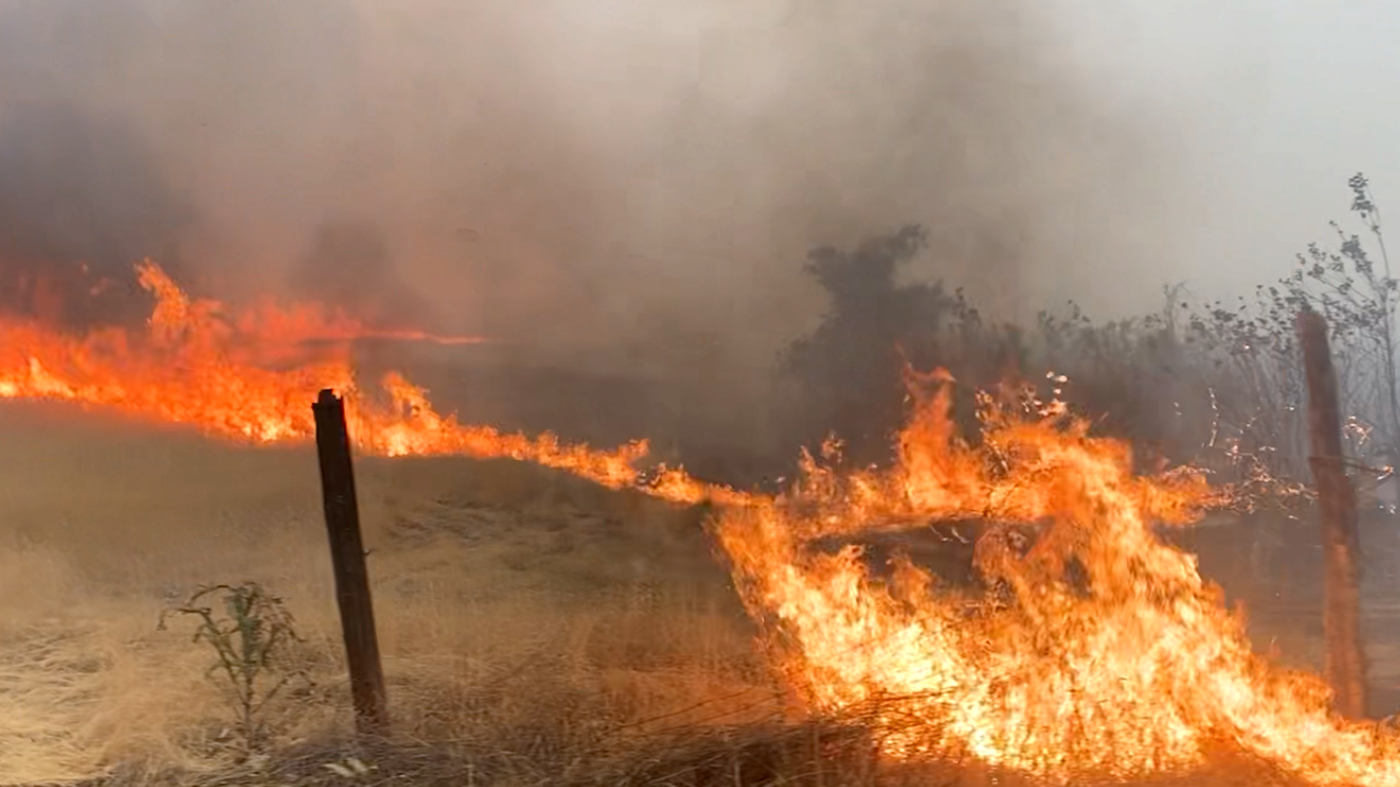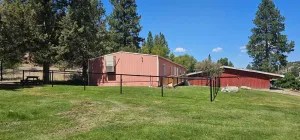Early day settlers at Long Creek
Published 4:00 pm Sunday, January 26, 2003
One of the earliest settlers in the Long Creek Valley on the creek was George Rader. His place was located about 3 miles west of Highway 395. When he first came to the valley he told of the grass all being burned. The Indians had moved out in the fall and burned the grass as they went. George’s place is owned today by George Cannon.
Trending
Ples Fanning was another early settler on the creek, and also a very prominent businessman. He homesteaded the place where my parents, Fred and Sharon Livingston now live. He also owned and operated the grist mill where everyone ground their wheat. It was located approximately where George Cannon now lives.
Steve Harer homesteaded where Ted Carter now lives. T.L. Carter told of going to visit them; they had no stove in the house, only a fireplace in one end, and they did all of their cooking over the open fireplace.
Lizey Scroggins homesteaded below Ples Fanning on the creek; she had three boys and four girls. Her husband was never around, but T.L. Carter told of visiting her and eating at her place. It is also owned by Fred and Sharon Livingston.
Trending
Grandma and Grandpa Blackwell homesteaded the place where Jack Blackwell now lives; it had been registered by the state as a Century Farm. The Blackwells are my great-great-great grandparents.
Walter and Sherm Kenney were horse traders. Walt settled where T.L. Carter now lives; Sherm was up the creek about 5 miles. The story is told that Sherm ran horses on the forest and never paid for the grass. He had two quart jars full of gold coins; he would accept nothing but gold coins when selling his horses. He wouldn’t put his money in the bank; instead he buried it and there was speculation that no one ever found it. Walter was a racehorse man; he trained a string of horses and traveled around the countryside to fairs and race meets where he won a lot of money.
Archie and Nell Harris also lived where my parents do now; they bought the place from Ples Fanning. Mrs. Harris was a bird woman and had fancy cages for them.
Settling the valley brought many hardships to families. It cost $16 to file on 160 acres. Everyone raised hogs, chickens, turkeys and some cattle. People had anywhere from eight to 50 head of cows. Sometimes the men of the family worked out to help make enough money to support and feed their families. Susanville was a gold mining area, and men worked there freighting ore to the smelters.
Settlers raised grain such as wheat, barley, oats and some rye. They harvested the wheat, hauled it to the grist mill, had it ground for their flour, and then fed the hulls, called bran, to their hogs.
In the beginning, most people had Durham or Shorthorn cattle; George Rader had a large band of sheep as did some others.
Harvesting was a major process. Along the creek, most people raised timothy hay. They had to mow it, rake it, and mound it into shocks by hand. Then, someone came along with a wagon and hauled it to the stackyard where it was stacked by hand. Then, a Jackson fork or derrick was designed. It was like a pulley system into the barn. A three-pronged fork was placed on the wagonload of hay, a team of horses was attached to a belt, and they were driven away from the barn, causing the fork to be raised. Driving derrick was always assigned to the “kids.” As time went by and more sophisticated methods of putting up hay were devised, people began to purchase binders. The first binders were horse-drawn; the hay was cut and bound into bundles, and tied with twine. Stacking these bundles was quite an art, because they were slippery and good bundle-stackers were always in demand.
Supplies were freighted in by teams and freight wagons. They came up the river from The Dalles to Canyon City and John Day. Dan Morrow and Tom Harryman were early-day freighters. My great-great-grandfather, C.W. Conger, owned a store in Long Creek. My grandmother bought an oval mirror about 2 feet by 4 feet; it was hauled into Long Creek by freight in 1910. My mother has the mirror and it hangs in our dining room. Grandma paid $5 for it.
Cattle were driven to market at the railhead in Heppner. It was several days drive and they traveled down through Hamilton, Monument and over Sunflower Flats. At that time, cattle were worth about $17-$24 per head.
Most families raised all their own food. Money was very scarce and 25-cents to spend when the family went to Long Creek once or twice a year was a real treat. Overalls were 75-cents per pair and kids went barefoot until they were 12 years old and expected to do a man’s work.
Families had to provide their own entertainment. On the Fourth of July, there would be horse races at the local racetrack, which was located near the present-day sawmill. There would be sack races for the kids. Most of the women could play the piano and some of the men would play the banjo or the fiddle. The Leathers family provided good music, as did the Lamb boys. The kids slept while the adults danced. Kids would take a small rock for weight, unravel a Rockford sock, wrap the yarn around the rock, and have a ball to play with. Kids trapped squirrels and hunted rabbits. Long Creek had a band, which they called the Long Creek Comets. My great-grandmother, several of her brothers and her sister played in it. They traveled to John Day to the County Fair to play also.
Ben Carter, whose grandparents William and Perniece Carter homesteaded where Bud McGirr now lives, told of walking 2 1/2 miles to school, and then riding horseback 5 miles to high school. He and his brother, T.L., rode colts to break them; the 5-mile ride morning and night was a good start for their training. Ben worked as a janitor for the school one year and earned enough money to by a 30.06. He quit school after his sophomore year and worked for his dad for $50 per month to pay for a ranch.
T. L. Carter, Ben’s older brother decided he wanted to go to college. In 1920, he left the ranch, went to work for the Forest Service at Hiyu Guard Station for $100 per month. He spent the summer there and at Raddue; he only had company one time that summer. In the fall, he started out for college. He walked from Long Creek to Monument, where he stayed all night. He walked to the top of Heppner Mountain, where he was overtaken by a salesman in a car. All T.L. had was a flour sack with his clothes in it. He rode with the man to Heppner, where he boarded the train and headed for Corvallis. He made $100 per month for four months and that was the money he went to school on.
My grandmother, Rose Carter, taught school at the Carter District; the school was across the road from Ted Carter’s place. She lived in Long Creek and rode to school from there. One morning when she went to catch her horse, he was gone. He had fallen in the well; my great-grandfather, John Carter, who was her fiance at that time, found Dr. Beaucamp, who had the only car in Long Creek. They used the car to pull the horse out, and she rode to school in a car that day.
My great-grandmother was very fortunate; in the early 1990s not many people were able to finish school. However, her father was a good businessman and had enough money to send her to high school in Pendleton and later to business college in Portland.
The early-day settlers are really to be admired. They faced many hardships which we will never have to; we have motor transportation, school buses to ride, and all kinds of conveniences which allow us time for recreation. I wonder if we appreciate all of our conveniences.
Fred John Livingston still lives at Long Creek, where he ranches. This article was written as a school paper in 1978.
CATTLE STATS
There were around 55 cars of cattle on the market Monday; the demand was very good and prices generally 25 cents to 35 cents higher. The bulk of the better grades of steers sold from $5 to $5.25 (per hundred weight). We sold one carload of steers for Mr. John Porter, Long Creek, Ore., averaging around 1,140 pounds at $5.50; also one car averaging 1,061 for $5.50; these cattle belonged to Mr. John Carter of Long Creek, Ore. These sales were the extreme top of the days’ sales.
Top cows sold up to $3.25; medium kinds from $2.50 to $2.75; common kinds from $1.75. Yearling heifers sold for $3.25-$3.15. Choice light calves were selling up to $5.75.
Submitted by Sharon Livingston of Long Creek. Taken from a Kidwell & Caswell North Portland, Oregon, Market Report dated July 24, 1934.









